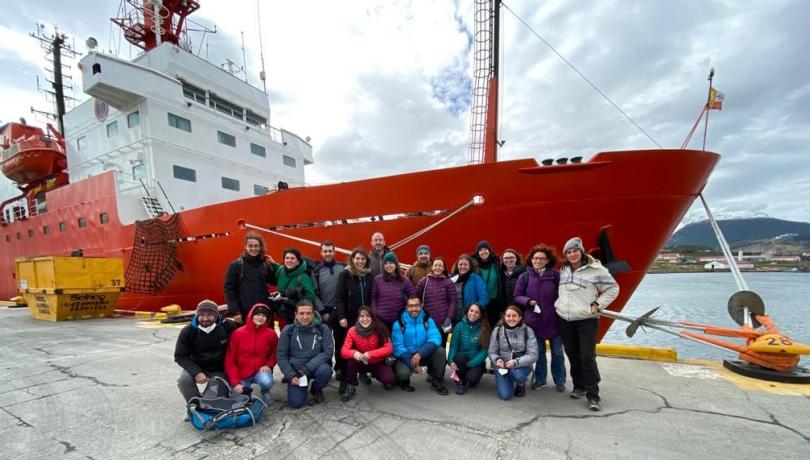The results of the study will help to understand what effects these chemical pollutants have on Antarctic ecosystems.

The Institute of Environmental Assessment and Water Research (IDAEA-CSIC), together with the Institute of Marine Sciences (ICM-CSIC), the Institute of General Organic Chemistry (IQOG-CSIC), and the University of Vigo today begin the expedition ANTOM- II in the Southern Ocean to analyze the impact of emerging pollutants and semi-volatile organic compounds of human origin.
The expedition departs from Ushuaia (Argentina) to the Bellinghausen Sea, in Antarctica, in the Oceanographic Research Ship "Hesperides". In the next month, researchers will focus on analyzing the potential of Antarctic marine microorganisms to degrade these contaminants of human origin.
"We want to know the effects of organic matter of human origin on the microbial communities of Antarctica. We will also evaluate the ability of bacteria to degrade these pollutants", explains the IDAEA-CSIC researcher and project coordinator, Jordi Dachs.
This project is a continuation of the study that began in December 2020, when the ANTOM-I expedition departed from Vigo to Punta Arenas (Chile). This expedition collected air and water samples in the Atlantic Ocean to determine how chemical pollutants were transported to the Southern Ocean.
"The overall objective of ANTOM is to quantify the atmospheric inputs of emerging organic pollutants and anthropogenic organic matter in the Southern Ocean, and to study their biogeochemical relevance", explains IQOG-CSIC researcher and project co-IP Begoña Jiménez.
For her part, lecturer and researcher Cristina Sobrino, from the Department of Ecology and Animal Biology at UVigo, points out that the three participants from the academic institution in Vigo "are responsible for the study of these compounds of human origin on the abundance, composition and metabolism of phytoplankton.
“These results are very important because phytoplankton, despite their small size, are the base of the marine food chain and form an active part of the global carbon cycle, capturing atmospheric CO2 and thus contributing to the regulation of the planet's climate", Sobrino explains.
In this sense, ICM-CSIC researchers Silvia G. Acinas and Marta Royo add that "this campaign will allow us to build a catalogue of the genomes of archaea and polar bacteria in the Antarctic, in addition to investigating the metabolisms associated with the capacity to degrade different pollutants and their dispersion in the global ocean".
On the other hand, ICM-CSIC researchers Andrea G. Bravo and Isabel Sanz Sáez will study the concentrations and transformations of different chemical forms of mercury with the aim of quantifying the formation of methylmercury, the chemical form that accumulates in food chains, while Massimo Pernice, also from the ICM-CSIC, will measure the abundances of microorganisms that form part of the plankton.
The results obtained from this project will help to understand the effects of human-induced pollution on Antarctic ecosystems. The anthropogenic chemical footprint determined in this area is a reflection of the lifestyle of today's society and this project will show the extent and impact of pollution in remote areas.